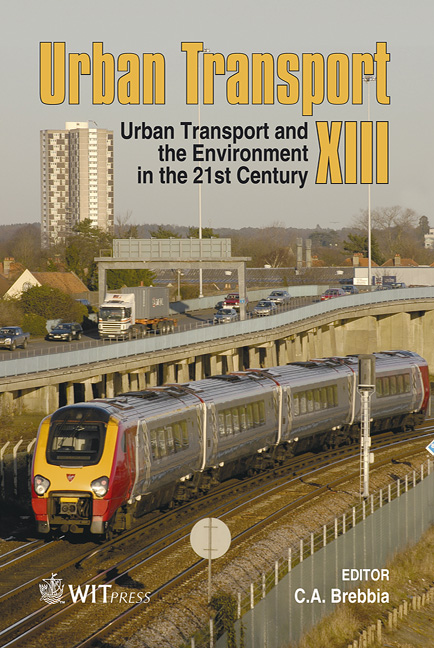A Dynamic Highway Flow Control Simulation Model For Solving The Congestion Problem
Price
Free (open access)
Transaction
Volume
96
Pages
12
Published
2007
Size
602 kb
Paper DOI
10.2495/UT070291
Copyright
WIT Press
Author(s)
C. L. Yang & W. Wen
Abstract
In this paper, we have developed a simulation model coded in Arena to help design a dynamically automatic traffic flow control simulation model without a time limit barrier. The model simulates the section of the Chung-Sam highway between Taipei and TaoYuan in which the distance is 31.9 kilometers. We adopt dynamic speed limits and practical measures to simulate the arrival number of cars and the leaving number of cars in a time interval. First, we set each lane with the speed limit of 100 or 125 km/hr and a stop-and-go traffic light sign at the entrance ramp with 0, 5, 10, and 15 seconds. Next, by controlling the departure speed of the junction, we find that it causes a better result for enlarging the maximum flow. The simulation model with the dynamic speed limit is able to dynamically guide traffic in rush hours. Finally, the dynamically automatic traffic flow control models without a time limit barrier and with a time limit barrier at 0, 5, 10, and 15 seconds are implemented and analyzed. We find that the dynamically automatic traffic flow control model without a time limit barrier is better than that of the model with a time limit barrier. Keywords: simulation model, highway traffic, traffic congestion. 1 Introduction Highway traffic congestion has been causing many critical problems and challenges in many modern cities, which have highways to pass through them. In particular, at rush hours, drivers, who need to go to offices daily via a highway, do not like to queue for long periods at entrance ramps or on highways. To the
Keywords
simulation model, highway traffic, traffic congestion.





